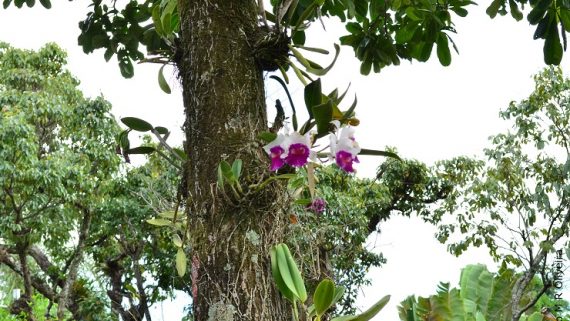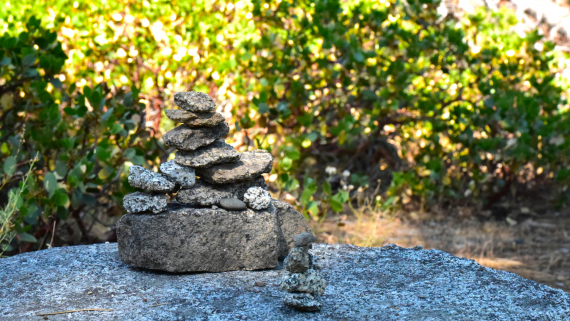12 plants that can't lack in your aquatic garden
 Interest in aquatic flora has been increasing with the enhancement of the water element in Landscaping. We see more and more the insertion of water mirrors, lakes and biological pools in the landscape projects, which leads us to ask ourselves: What about plants? Yes! They are present! Both inside and outside the water, in that soaked region that we call marginal or palustre.
Interest in aquatic flora has been increasing with the enhancement of the water element in Landscaping. We see more and more the insertion of water mirrors, lakes and biological pools in the landscape projects, which leads us to ask ourselves: What about plants? Yes! They are present! Both inside and outside the water, in that soaked region that we call marginal or palustre.
Aquatic plants are an eternal source of fascination for those passionate about plants and gardens. And it is not surprising! They are always green and with beautiful surprises throughout the year for us privileged by the tropical climate. But they are also the source of many doubts. "What plant is that?", "How to plant it?" and "What care should I take?" are just the beginning.
So, I selected some species with their basic characteristics and cultivation method, which certainly cannot be missing in your aquatic garden! They are divided into the following groups to facilitate the choice when using them: Marginals or Palustres; Fixed Floatings Aquatics; and Free Floating Aquatics.
Marginals or Palustrial
Marginal or palustrial plants are those that develop in soaked soil or under a small water layer, a condition found on the banks of lakes and ponds. They will form the frame of our aquatic garden, highlighting the water surface in the middle of the landscape.

Imagem: Dicas de Saúde
1. Chapéu de couro
Scientific name: Echinodorusgrandiflorus
Family: Alismataceae
Source: Native of Brazil
Characteristics and cultivation: Palustrine herb, perennial and rhizomatous, reaches up to 2 m in height, very ornamental. It has large leaves, rough texture, and inflorescences with very beautiful white flowers. It is also a medicinal plant used for various purposes in popular medicine. It should be grown on soaked soils, in full sun or half shade.
 2. Copo-de-leite
2. Copo-de-leite
Scientific name: Zantedeschia Aethiopica
Family: Araceae
Source: Originally from South Africa
Characteristics and cultivation: Herbaceous palustre that reaches about 80 cm in height. It has very ornamental basal leaves, dark green in color and inflorescence, also ornamental, with white spathe, arranged above the foliage. Ideal to be grown on the banks of lakes in tanks in half shade.

Imagem: Flores e Folhagens
3. Inhame-preto
Scientific name: Colocasia Esculenta Var. Aquatilis
Family: Araceae
Source: Native of tropical Asia
Characteristics and cultivation:Palustrine herb, perennial, rhizomatous and stoloniferous, with very ornamental foliage. It is acaule and cespitosa, reaching 1.5 m in height. Its beautiful leaves have a long petiole and black-purple purplish membrane. It should be grown in soaked soils or in water, under a small blade, in half shade or full sun.

Imagem: Uma Flor por Dia
4. Sombrinha-chinesa
Scientific name: Cyperus Alternifolius
Family: Cyperaceae
Source: Native of Madagascar
Characteristics and cultivation:Palustrine herb, perennial and rhizomatous, with size ranging from 0.5 to 1.8 m in height. Its foliage is very ornamental, with several upright stems with a crown of bright green leaves at the apex. Ideal for formation of massifs on the banks of ponds and lakes.
Fixed Floating Aquatics
The fixed floating aquatic plants are planted at the bottom of the lake, where their roots and rhizomes are fixed, while their leaves reach the water surface. The depth of planting varies a lot with the species, so it is always important to seek to know more about the plant we are growing!

Imagem Fauna e Flora do RN
5. Papoula-do-brejo
Scientific name: Hydrocleysnymphoides
Family: Alismataceae
Source: Native of the Americas
Characteristics and cultivation:Herbácea aquática, rizomatosa e muito ornamental, tanto pelo efeito de suas folhas como flores. As folhas são ovais e brilhantes; as flores amarelas, formadas na primavera e verão. Ajusta-se facilmente a diferentes profundidades, desde 50 a 15 cm abaixo da superfície.

Imagem: G1
6. Trevo-aquático
Scientific name: Marsilea Deflexa
Family: Masileaceae
Source: Native of Brazil
Características e cultivo: Aquatic pteridophyte, which has delicate floating foliage, similar to the four-leaf clover. It reproduces very well vegetatively through the release of new shoots. It should be planted directly in the lake's mud or in a pot with a substrate rich in organic matter, in a depth of 50 to 10 cm.

Imagem: Arquitetos e Paisagistas
7. Estrela-branca
Scientific name: Nymphoides indica
Family: Menyanthaceae
Origem: América e África tropicais
Characteristics and cultivation: Aquatic, rhizomatous and very ornamental herbaceous. Its leaves are similar to those of water lilies, but in much smaller dimensions, up to 10 cm in diameter. Its beautiful white and densely hairy flowers are formed in spring and summer. It should be planted on the substrate under a water column of up to 40 cm in full sun or half shade.
 8. Ninfeias
8. Ninfeias
Scientific name: Nymphaea Spp.
Family: Nymphaeaceae
Source: Distributed all over the world
Characteristics and cultivation:Herbaceous tuberous, aquatic, with ornamental foliage and flowering. Large, orbicular, leathery and shiny leaves. The flowers are large, solitary, of different colors: white, blue, purple, pink and yellow. They must be planted in mud or in pots, at least 30 cm deep, and under a water column that can vary from 30 cm to 1.0 m, depending on the species.
Free Floating Aquatics
Plants that are floating on the water surface and do not need a substrate to root are known as free floating aquatic plants. It is a very interesting group that gives movement to the aquatic garden, since they change their position according to the movement of the water.

Imagem: Flora Aquática
9. Camalotinho
Scientific name: Limnobium Laevigatum
Family: Hydrocharitaceae
Source: Central and South America
Characteristics and cultivation:Aquatic herbaceous, free floating or rooted, with very ornamental foliage. The leaves are elliptical with a rounded apex, with a lower surface with air pockets. The flowers are of secondary ornamental importance. It should be grown free on the surface of lakes, water mirrors or tubs, in half shade or full sun.

Imagem: Biologia da Conservação
10. Aguapé
Scientific name: Eichhorniacrassipes
Family: Pontederiaceae
Source: Native of Brazil
Characteristics and cultivation: Aquatic herbaceous, free floating or rooted, with foliage and very ornamental flowering. The leaves are immersed with inflated petioles and rounded blades. The inflorescence reaches up to 15 cm with flowers of lilac to bluish color, formed in summer and autumn.
 11. Lombrigueira
11. Lombrigueira
Scientific name: Ludwigiahelminthorrhiza
Family: Onagraceae
Source: Native of Brazil
Characteristics and cultivation: Aquatic herbaceous, free floating or rooted, with foliage and very ornamental flowering. It has white worms-like floats; green and shiny leaves; solitary, axillary flowers, white in color, formed almost all year round. Very vigorous tropical plant, which can be used in lakes, water mirrors or dams. Its maintenance must be periodic, pruning branches in order to avoid their spread. Does not tolerate frosts.

Imagem: Líder Agronomia
12. Azolla
Scientific name: Azollafiliculoides
Family: Azollaceae
Source: Native of South America
Characteristics and cultivation:Delicate aquatic pteridophyte, up to 2.5 cm. It has a branched stem and numerous roots. Ideal for small environments, such as vases, tubs and fountains, but also in larger lakes, since used in forming small groups. The half-shade has a green color, while in full sun it acquires a red color. This species has cavities inhabited by cyanobacteria, which fix nitrogen in the medium. The excess of plants on the water surface should be removed whenever necessary, especially in the summer - the time of greatest growth.
These species are just a little of what exists in the universe of aquatic plants, but they will certainly make our aquatic garden more beautiful and more alive. It is always worth remembering that the management of these plants is essential. Most aquatic plants are very vigorous and fast growing, so they need pruning and removal of excess plants constantly.
By: Uli Suadicani
You may also be interested in:
Landscaping Trend: Vertical Gardens - International Inspirations



 2. Copo-de-leite
2. Copo-de-leite 8. Ninfeias
8. Ninfeias 11. Lombrigueira
11. Lombrigueira







O problema está mais em onde encontrar essas plantas
O problema está mais em onde encontrar essas plantas